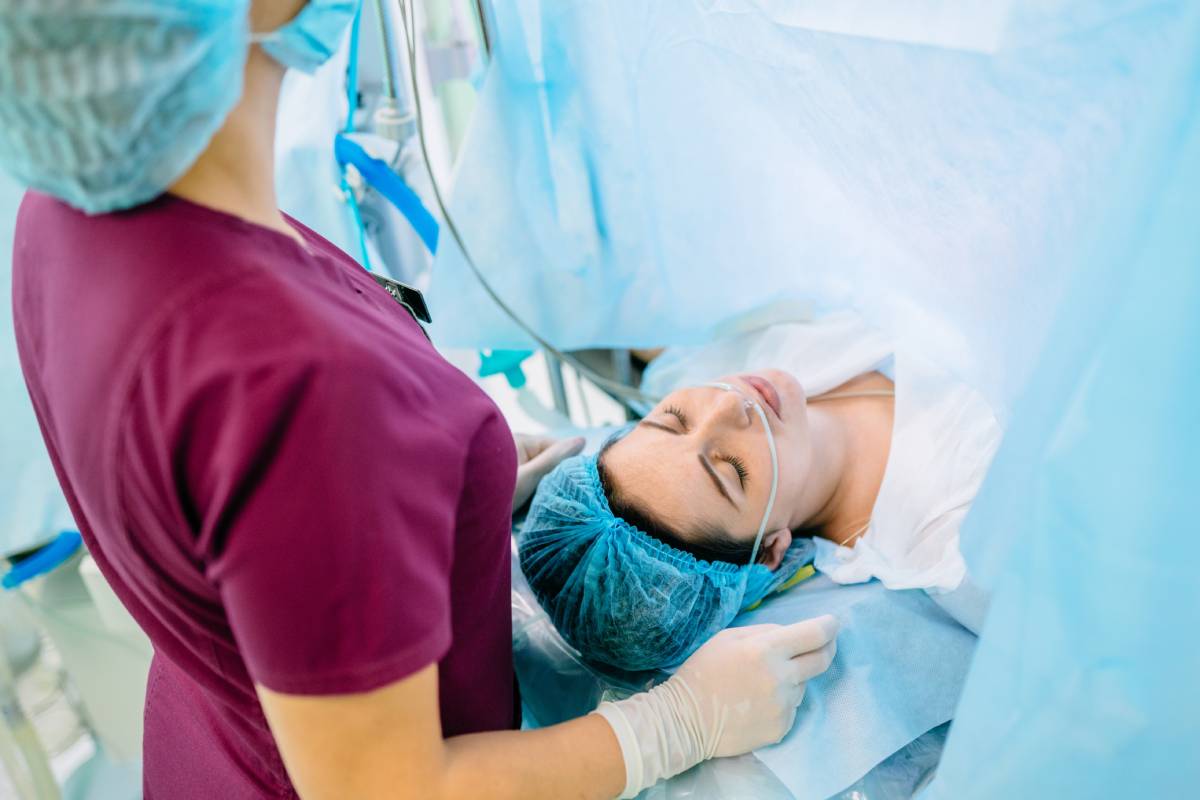Patient Comfort Under Anesthesia

Patient comfort under anesthesia is of utmost importance. Not only does patient comfort promote subjective measures of satisfaction, but research also indicates that patient comfort may reduce recovery times and complication rates [1]. There are various ways by which anesthesia providers and surgical staff can maximize patient comfort under anesthesia, including addressing patient anxiety, as well as adjusting fasting techniques and modulating patient body temperature (OR).
Addressing Patient Anxiety
Especially during wide-awake operations, patient anxiety can jeopardize the outcome of a procedure. As a result, medical professionals should take steps to assuage anxiety before an operation. One way of doing so is by reassuring patients about the safety of anesthesia [2]. Furthermore, presenting patients with techniques such as daily meditation, cognitive behavior therapy, and biofeedback could also allow them to go into surgery with less anxiety. [2].
During the operation itself, playing music may help curb anxiety for patients undergoing the procedure while awake, especially as it can distract the patient and screen out noises from the operation [3]. The music should be chosen by the patient and can be played out loud or via a headset [3]. Efforts should be made to minimize background noise as much as possible, including conversations and remarks among the medical team [3]. Lastly, communication with patients is important to ensure that they remain calm during the operation [3].
Adjusting Fasting Techniques
Shortening the length of pre-anesthesia fasting has been demonstrated to improve patient comfort levels in some cases [4]. One such context is elective laparoscopic surgery. Liang and colleagues found that, compared to the control group, which fasted for 12 hours and could not drink water for 6 hours before their surgery, the research group (6-hour fasting, 2-hour water deprivation) reported greater comfort levels [4].
If providers are wary of shortening the fasting period for safety reasons, an alternative could be to provide patients with a carbohydrate drink shortly before the surgery [5]. Bopp et al. found that administering 200 mL of such a drink two hours before the surgery promoted patient comfort and satisfaction during ophthalmologic operations [5].
Modulating Patient Body Temperature
Lastly, addressing patient body temperature is another way of promoting patient comfort while they are under anesthesia. Changing the OR temperature is a controversial topic in part because of the competing interests at play: lower OR temperatures can bother patients and potentially produce mild hypothermia, while higher temperatures can inhibit provider performance and risk infection if providers begin to sweat [6, 7]. Regulatory guidelines thus recommend that the OR be just below ambient room air temperatures [6]. Nevertheless, providers can make use of other techniques —such as the placement of forced-air systems over the patient or, more simply, giving the patient a blanket— to strike a compromise and promote both good outcomes and patient satisfaction [7].
Closing Remarks
The techniques presented in this article are just a sampling of the ways that providers can promote patient comfort under anesthesia. What matters above all else is anticipating sensitivities and communicating, both with the patient and among members of the medical team, to ensure that patient preferences are satisfied to the greatest extent possible.
References
[1] Y. Tian, J. Lin, and F. Gao, “The effects of comfort care on the recovery quality of oral and maxillofacial surgery patients undergoing general anesthesia,” American Journal of Translational Research, vol. 13, no. 5, pp. 5003-10, May 2021. [Online]. Available: https://www.ncbi.nlm.nih.gov/pmc/articles/PMC8205744/.
[2] K. Katella, “Pre-Surgery Anxiety? The Anesthesiologist Can Help,” Yale Medicine, Updated November 7, 2017. [Online]. Available: https://www.yalemedicine.org/news/anesthesiologists-help-calm-surgery-anxiety.
[3] P. Hu, D. Harmon, and H. Frizelle, “Patient Comfort During Regional Anesthesia,” Journal of Clinical Anesthesia, vol. 19, no. 1, pp. 67-74, February 2007. [Online]. Available: https://doi.org/10.1016/j.jclinane.2006.02.016.
[4] Y. Liang, X. Yan, and Y. Liao, “The effect of shortening the preoperative fasting period on patient comfort and gastrointestinal function after elective laparoscopic surgery,” American Journal of Translational Research, vol. 13, no. 11, pp. 13067-75, November 2021. [Online]. Available: https://www.ncbi.nlm.nih.gov/pmc/articles/PMC8661208/.
[5] C. Bopp et al., “A liberal preoperative fasting regimen improves patient comfort and satisfaction with anesthesia care in day-stay minor surgery,” Minerva Anestesiologica, vol. 77, no. 7, pp. 680-86, February 2009. [Online]. Available: https://europepmc.org/article/med/19190563.
[6] T. W. Henry et al., “The Clinical Impact of Ambient Operating Room Temperature and Other Perioperative Factors on Patient Comfort during Wide-awake Hand Surgery Using Local Anesthesia,” The Archives of Bone and Joint Surgery, vol. 9, no. 1, pp. 110-15, January 2021. [Online]. Available: https://doi.org/10.22038%2Fabjs.2020.44850.2228.
[7] M. Díaz and D. E. Becker, “Thermoregulation: Physiological and Clinical Considerations during Sedation and General Anesthesia,” Anesthesia Progress, vol. 57, no. 1, pp. 25-33, Spring 2010. [Online]. Available: https://doi.org/10.2344%2F0003-3006-57.1.25.
